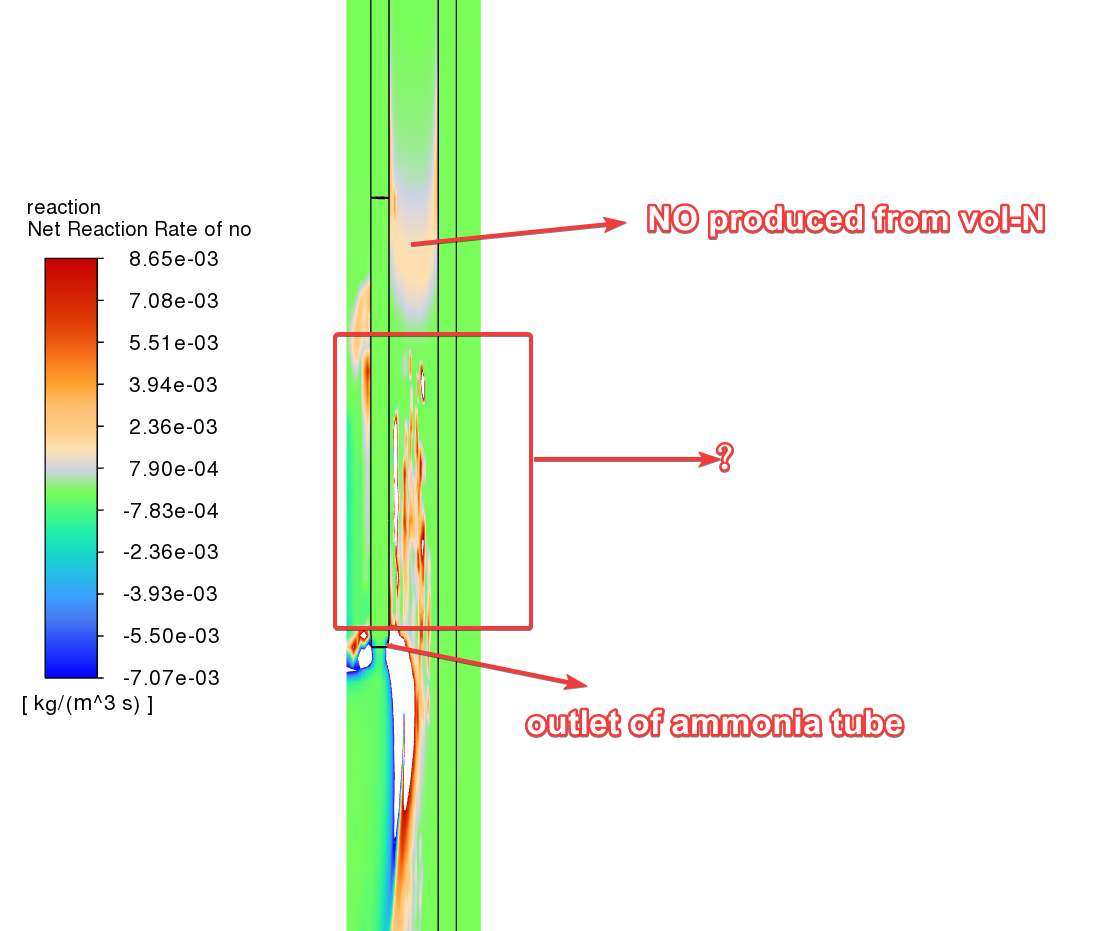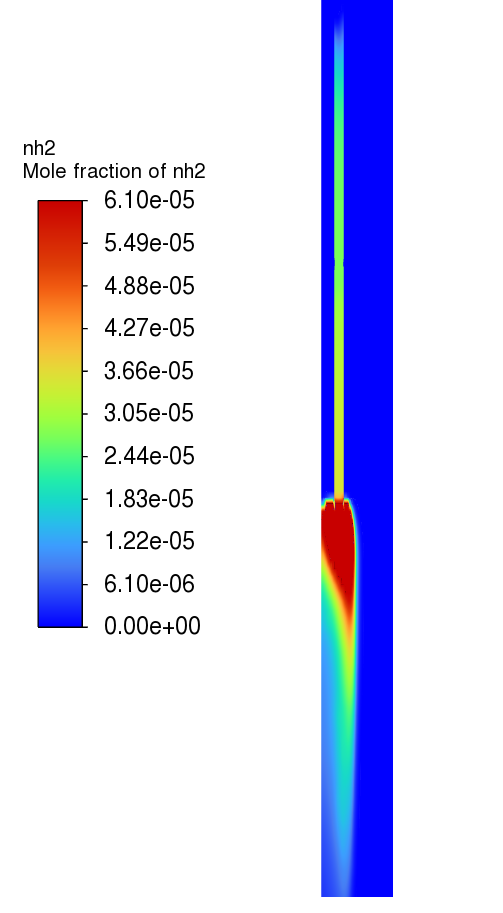TAGGED: simulation
-
-
November 3, 2025 at 2:22 am
sunyi24
SubscriberI am using the EDC model in Fluent to simulate the co-firing of ammonia and coal. I employed a simplified Okafor mechanism to describe the gas-phase reactions. However, when analyzing the results, I noticed the presence of NH2 radicals in the pipe carrying pure ammonia, and a relatively high concentration of O atoms in the OFA pipe supplying pure air. The reaction mechanism I used does not include the direct decomposition reaction of ammonia (NH3 = NH2 + H). In theory, there should be no NH2 in the ammonia pipe and no O in the OFA pipe. Although the concentrations are not high, this significantly affects the credibility of my results. Is this due to numerical false diffusion or computational error?
-
November 3, 2025 at 7:43 am
Essence
Ansys EmployeeHello,
Which reaction mechanism you have used?
-
November 3, 2025 at 1:42 pm
sunyi24
SubscriberThanks for your reply!
I used Okafor mechanism reduced by myself to simulate the gas reaction.This mechanism comprises 102 homogeneous (gas-phase) reactions and 5 gas-solid reactions. I have compared the reduced mechanism with original Okafor mechanism using Chemkin, in my opinion, it's usable.
Although determining the cause remains a goal, the presence of NH₂ radicals within the tube is now less concerning. More intriguingly, significant NO formation is observed near the wall upstream of the outlet following ammonia injection, despite the absence of a recirculation zone in the flow field.

-
November 3, 2025 at 2:56 pm
Essence
Ansys EmployeeI see. Can you please check if you have any NO and/or the NH2 in the species list in the mechanism? Generally, it is quite difficult to diagnose the issue if you have modified the things like - mechanism itself. Can you try out in the other unmodified mechanism just in case?
-
November 3, 2025 at 3:07 pm
sunyi24
SubscriberYes,NO , NH2, NH, N are all in the mixture.Unmodified mechanism usually needs much time to solve out. That's why I need to do some reduction.Is the noticeable NO generation reaction phenomenon upstream of the ammonia pipe outlet caused by the grid, the algorithm, or something else?
-
November 3, 2025 at 5:33 pm
Essence
Ansys EmployeePlease check if the mass/mole fraction of the NO, NH2, NH and N are defined as zero. If not, then you can expect these species in your domain. Also please re-check if there is really no reaction involving the before mentioned species.
-
November 4, 2025 at 2:09 am
sunyi24
SubscriberThe mole fractions of these species at the inlet boundary are all set to 0. The phenomenon of NO generation reaction occurring upstream of the ammonia pipe outlet varies with the ammonia injection location. Specifically, when ammonia is injected at 0.6 m, the reaction appears between 0.4–0.6 m; when injected at 0.4 m, the reaction occurs between 0.2–0.4 m. It seems as though the ammonia from the pipe outlet is shifting upstream, but no backflow is observed. I'm wondering if this could be a numerical issue, perhaps related to the grid? The minimum orthogonal quality of my grid is 0.52, with a stretch ratio of 18.It seems that the grid is not so bad.
-
November 4, 2025 at 7:08 am
Essence
Ansys EmployeeAs you mentioned, please ensure that there is no reaction for NO to be generated. Also, please re-check if there is no flow reversal of ammonia. I am a bit suspicious about it. If possible, remove the reaction of formation of NO from the mechanism.
-
- You must be logged in to reply to this topic.


- air flow in and out of computer case
- Varying Bond model parameters to mimic soil particle cohesion/stiction
- Eroded Mass due to Erosion of Soil Particles by Fluids
- I am doing a corona simulation. But particles are not spreading.
- Centrifugal Fan Analysis for Determination of Characteristic Curve
- Issue to compile a UDF in ANSYS Fluent
- Guidance needed for Conjugate Heat Transfer Analysis for a 3s3p Li-ion Battery
- JACOBI Convergence Issue in ANSYS AQWA
- affinity not set
- Resuming SAG Mill Simulation with New Particle Batch in Rocky

-
4167
-
1487
-
1363
-
1194
-
1021

© 2025 Copyright ANSYS, Inc. All rights reserved.








